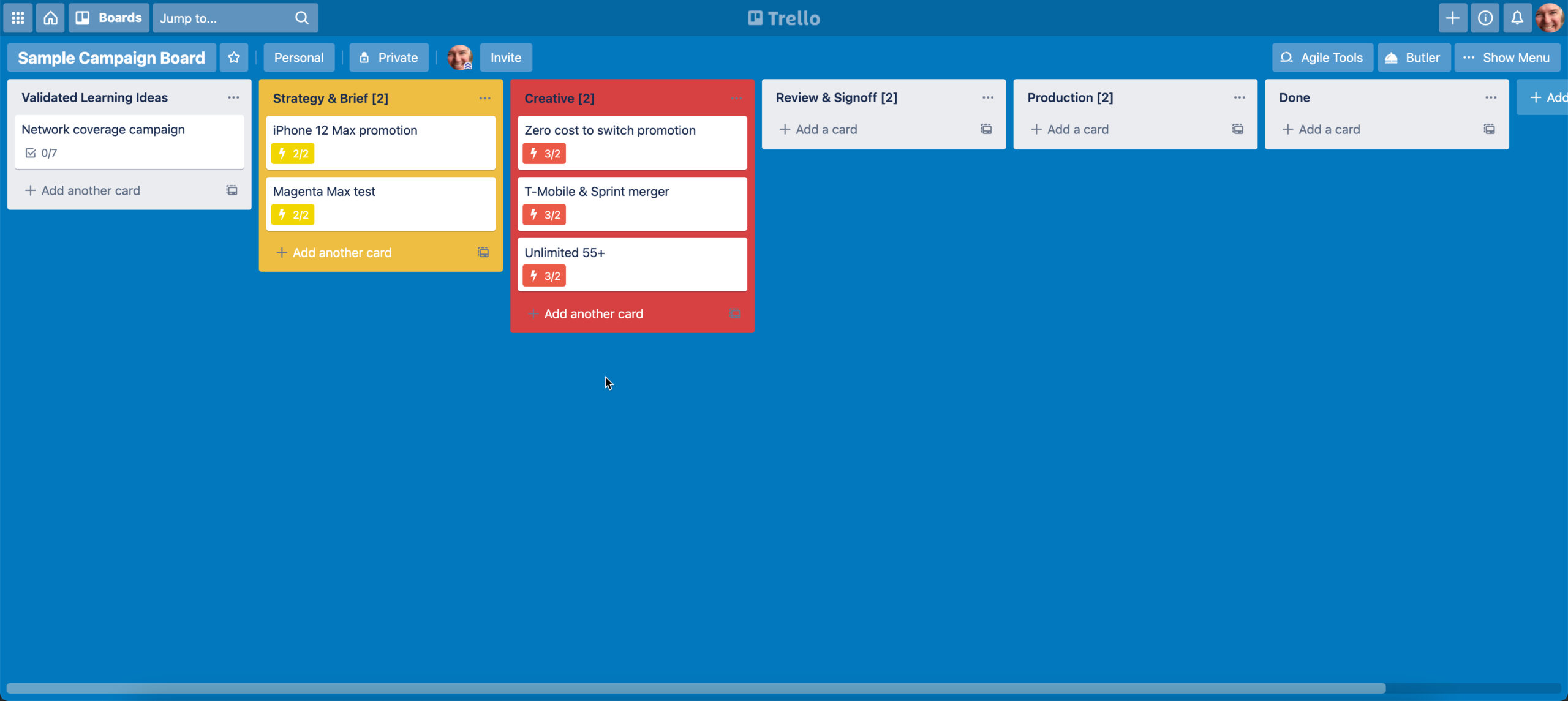
Work in Progress or WIP is defined as “The tasks currently being worked on by a team.” WIP can be measured for the entire team, for an individual, or for a particular stage in your workflow. Let’s take a look at the various ways to measure WIP and why limiting WIP will help you improve your marketing workflow.
Ways To Limit WIP: Per Stage
The first, and most common, way to measure WIP is to measure the number of tasks that are currently in progress at a particular stage in your marketing workflow. For example, if you have a stage called Review in your workflow and you have ten or more items at that stage in the workflow, some of which have been in review for 5-10 days, you have a classic bottleneck.
Teams address this bottleneck by limiting the number of work-in-progress tasks for that stage of your workflow. This is known as a WIP limit.
Let’s say you establish a WIP limit of 3. This implies that you should have no more than 3 items in progress at this stage at any given moment. When you add a fourth item, you surpass the WIP limit. When that happens, someone must address the issue: contact the reviewers and ask them to finish reviewing the items.
You may make an exception and allow items beyond the WIP limit. For example, if you put 4 items in the review column in quick succession and the reviewers haven’t had time to review, you might make an exception. But be careful about making exceptions. Too many, and your workflow will slow down and you won’t resolve bottlenecks.
Ways to Limit WIP: Per Person
Humans are not very good at multi-tasking and trying to multi-task just slows down the flow of work. Sometimes people need a nudge to remind them to stop starting new things and start finishing their current work. Limiting WIP per person can provide this nudge.
Typically, most teams limit the WIP per person to 3-5 tasks. The exact limit will depend on the type of work being done. If most of someone’s work items are small work items that require review, then the WIP limit for that person may be larger. If someone works on larger tasks, then the WIP limit for that person should generally be smaller.
Ways to Limit WIP: Limit Unplanned Work
A third use of WIP limits is to limit the number of unplanned and expedited items. For example, if you have a swim lane for expedited items, you can put a WIP limit of 1 on that entire swimlane. This signifies a policy that you’re not going to allow any more than 1 expedited item at a time.
For unplanned work, its typical to limit the number of unplanned items by size, rather than number. Many marketing teams set aside a certain percentage of their capacity to handle unplanned work. For example, if you set aside 20% of your capacity for unplanned work in a Sprint, you should apply a WIP limit equivalent to 20% of your capacity, expressed in Story Points.
Benefits of Limiting WIP
Managing the amount of work in progress (WIP) is not just a recommendation; it’s a fundamental strategy for maximizing efficiency and effectiveness. By deliberately limiting WIP, teams can unlock several significant benefits:
Enhanced Focus and Productivity: By reducing the number of concurrent tasks, marketing teams can direct their attention more effectively. This concentration improves the quality of work, as team members are not overburdened or distracted by too many simultaneous projects.
Faster Completion Rates: Limiting WIP leads to quicker turnaround times for individual tasks and projects. This is particularly beneficial in the fast-paced world of social media and YouTube marketing, where trends and audience interests can shift rapidly. Agile teams can adapt and respond more swiftly, keeping their content and strategies relevant and engaging.
Improved Team Morale and Reduced Burnout: A common challenge in marketing is the risk of burnout due to overwhelming workloads. By setting clear limits on WIP, teams can maintain a healthier work-life balance, which in turn fosters a more positive work environment and boosts overall team morale. Happy, engaged teams are more creative and productive, which directly benefits the company’s marketing efforts.
Better Prioritization and Decision-Making: Limiting WIP forces teams to prioritize tasks based on their impact and relevance to current marketing goals. This disciplined approach to task management ensures that resources are allocated effectively, and that the team is always working on the most critical and value-adding activities.
Conclusion
Limiting WIP is not just about managing tasks; it’s about fostering an environment where quality, efficiency, and team well-being are paramount. This approach is especially beneficial in the ever-evolving landscape of marketing, where staying agile and responsive is crucial to success.

